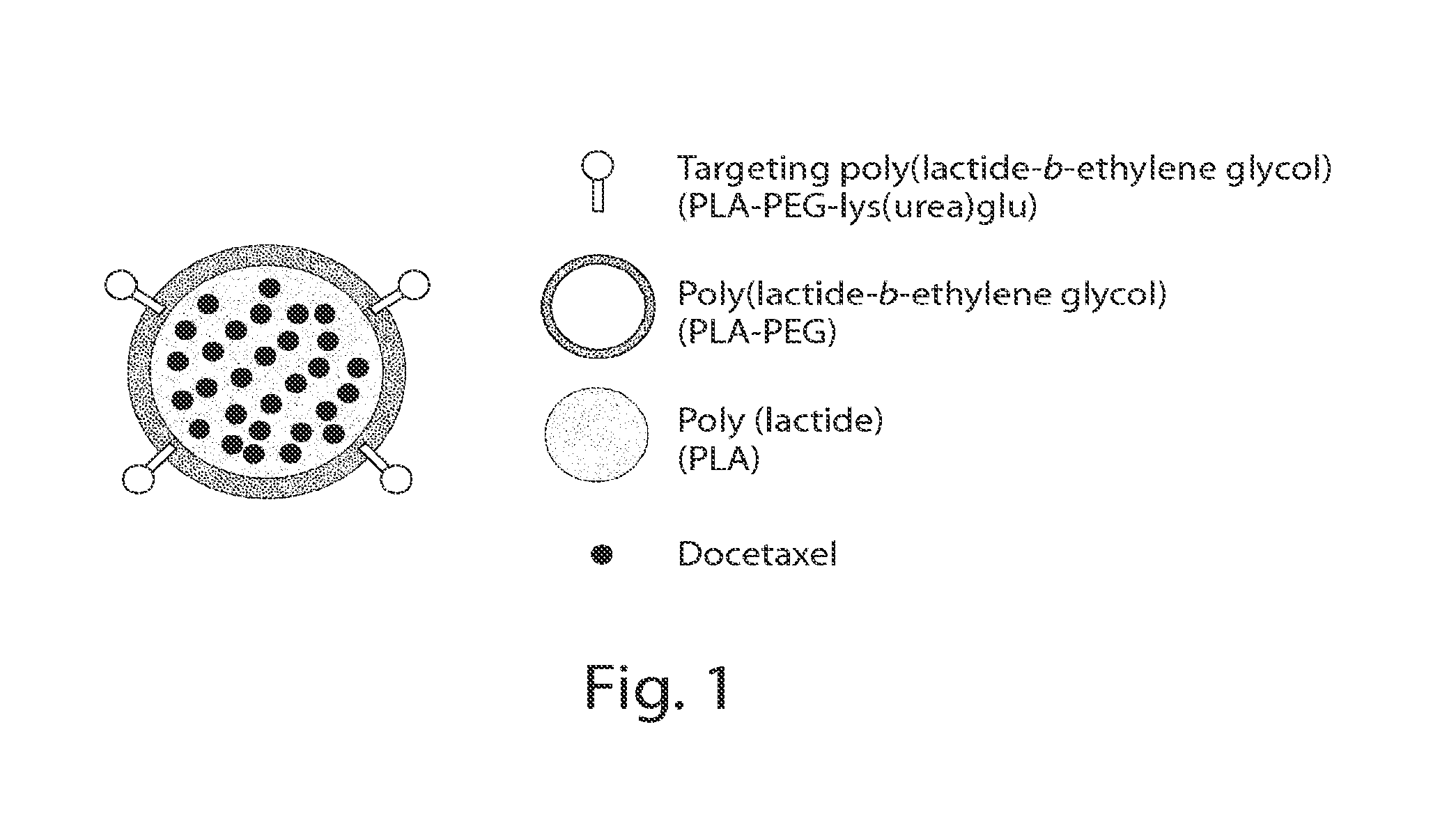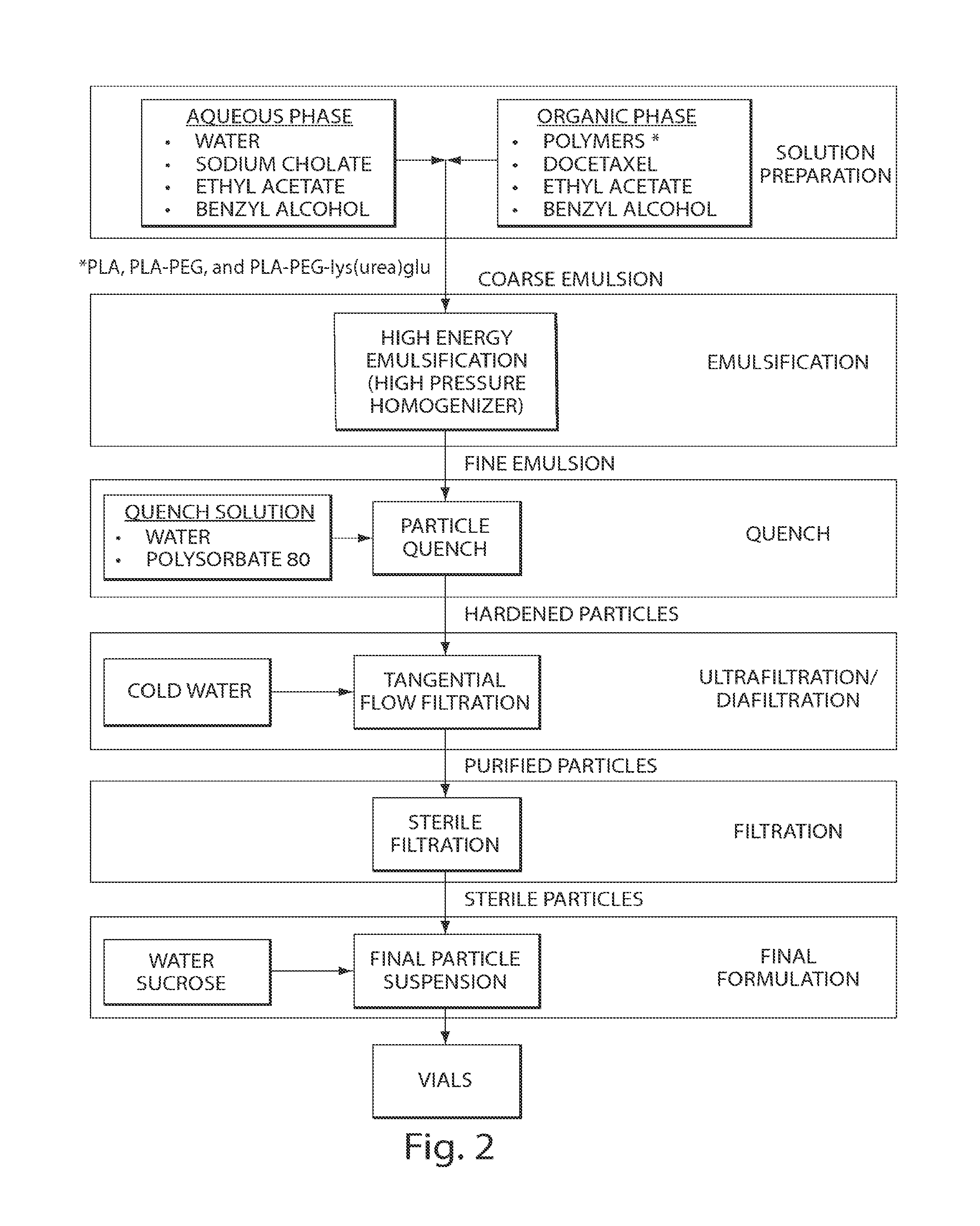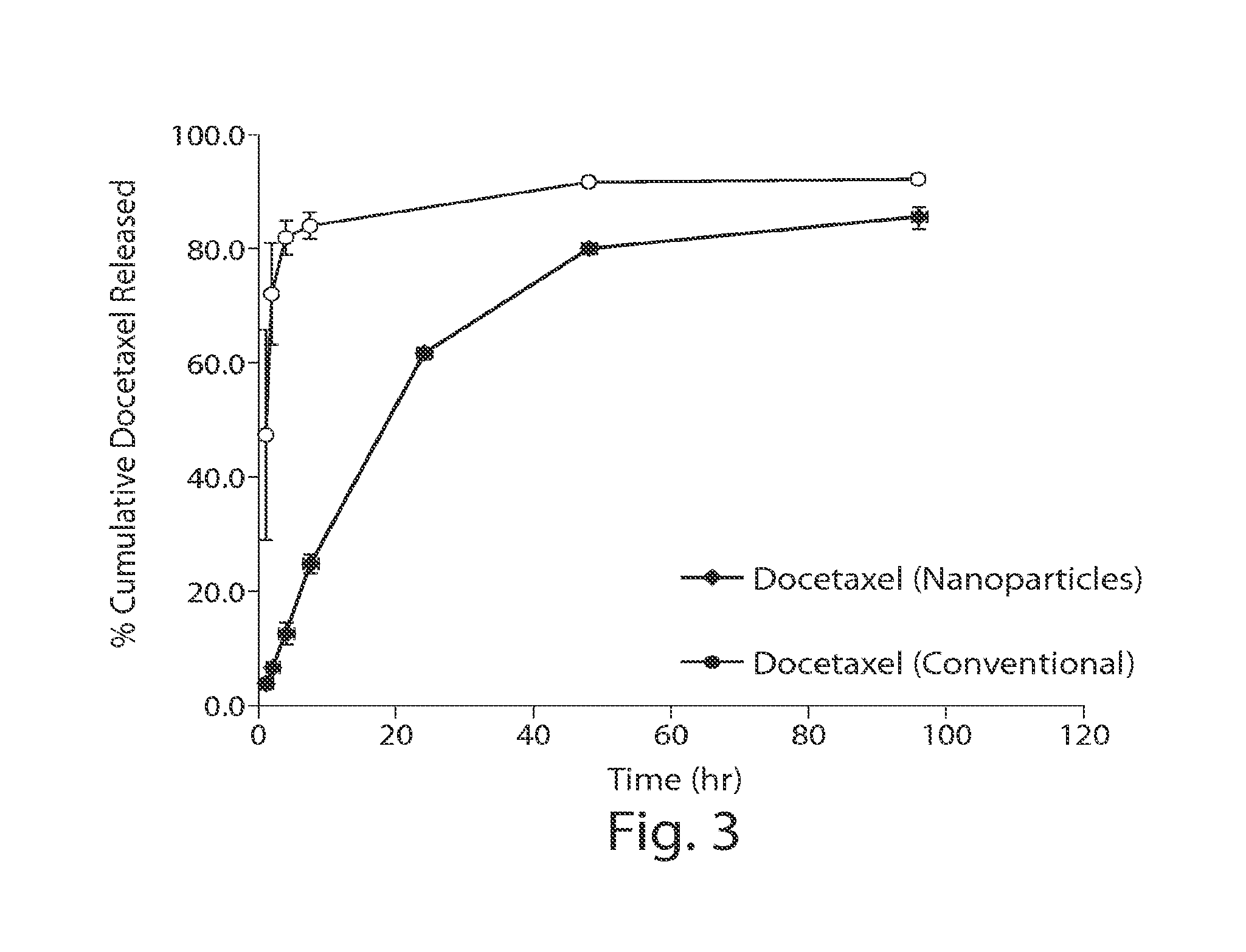Long circulating nanoparticles for sustained release of therapeutic agents
a technology of therapeutic agents and nanoparticles, which is applied in the direction of capsule delivery, drug compositions, microcapsules, etc., can solve the problems of inferior clinical efficacy, adverse effects, and lack of patient compliance with prescribed therapy, so as to reduce the volume distribution of active agents in patients, minimize unwanted side effects or toxicity of active agents, and improve clinical efficacy
- Summary
- Abstract
- Description
- Claims
- Application Information
AI Technical Summary
Benefits of technology
Problems solved by technology
Method used
Image
Examples
example 1
In Vitro Release of Docetaxel from Nanoparticles
[0086]A suspension of docetaxel encapsulated in nanoparticles fabricated according to the emulsion process depicted in FIG. 2 and Example 12 using 87.5 weight percent PLA-PEG, 10 wt. % docetaxel, and 2.5 wt. percent docetaxel (Formulation A) (all docetaxel nanoparticle formulations used in these Examples were in a composition of 5% nanoparticles, 65% water, and 30% sucrose). was placed in a dialysis cassette and incubated in a reservoir of phosphate buffered saline (PBS) at 37° C. with stirring. Samples of the dialysate were collected and analyzed for docetaxel using reversed phase high performance liquid chromatography (HPLC). For comparison, conventional docetaxel was analyzed under the same procedure.
[0087]FIG. 3 presents the in vitro release profile of docetaxel encapsulated in nanoparticles compared to conventional docetaxel. Release of the encapsulated docetaxel from the polymer matrix was essentially linear over the first 24 hou...
example 2
Single Dose Pharmacokinetic Study of Docetaxel Encapsulated in Nanoparticles and Conventional Docetaxel in Sprague-Dawley Rats
[0088]Six- to eight-week old male Sprague-Dawley rats were administered a single bolus dose (5 mg / kg of docetaxel) of docetaxel encapsulated in nanoparticles or conventional docetaxel via a tail vein. The dose groups consisted of six rats each. Blood was drawn at 0.083, 0.5, 1, 2, 3, 4, 6, and 24 hours post-dosing and processed to plasma. The concentration of total docetaxel in plasma was measured by a liquid chromatography-mass spectrometry (LC-MS) method following extraction with methyl tert-butyl ether (MTBE). The MTBE extraction does not differentiate nanoparticle-encapsulated docetaxel from docetaxel that was released from the nanoparticles into the plasma, and as such, the LC-MS data does not distinguish between the two.
[0089]FIG. 4 and Example Table 2.1 present the observed pharmacokinetic profiles and pharmacokinetic parameters, respectively, of docet...
example 3
Tissue Distribution Study of Docetaxel Encapsulated in Nanoparticles and Conventional Docetaxel in Sprague-Dawley Rats
[0092]Six- to eight-week old male Sprague-Dawley rats were administered a single bolus intravenous dose of one of the following: (1) docetaxel encapsulated in nanoparticles in which the ligand of the PLA-PEG-lys(urea)glu targeting polymer was 14C-labeled, (2) docetaxel encapsulated in nanoparticles in which the encapsulated docetaxel was 14C-labeled, (3) 14C-labeled conventional docetaxel.
[0093]Blood was drawn at 1, 3, 6, 12, and 24 hours post-dosing and processed to plasma. Immediately following blood collection, the rats were euthanized by CO2 asphyxiation and tissues were immediately collected, blotted, weighed, and frozen on dry ice. Tissue samples were stored frozen (approximately −70° C.) until analysis for radioactivity by liquid scintillation (LS) counting.
[0094]As shown in FIG. 5, the docetaxel encapsulated in nanoparticles was gradually cleared from the pla...
PUM
| Property | Measurement | Unit |
|---|---|---|
| diameter | aaaaa | aaaaa |
| weight ratio | aaaaa | aaaaa |
| weight ratio | aaaaa | aaaaa |
Abstract
Description
Claims
Application Information
 Login to View More
Login to View More - R&D
- Intellectual Property
- Life Sciences
- Materials
- Tech Scout
- Unparalleled Data Quality
- Higher Quality Content
- 60% Fewer Hallucinations
Browse by: Latest US Patents, China's latest patents, Technical Efficacy Thesaurus, Application Domain, Technology Topic, Popular Technical Reports.
© 2025 PatSnap. All rights reserved.Legal|Privacy policy|Modern Slavery Act Transparency Statement|Sitemap|About US| Contact US: help@patsnap.com



